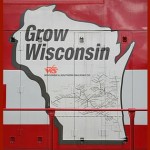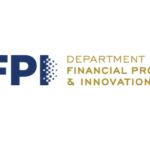I had a math teacher in high school who taught me what he called “Cook’s Law.” Essentially, it involved any situation where you knew the answer to the problem, but didn’t necessarily know how to show your work. He said that once you knew the answer, you could cook up how you got it. It was cheesy and corny, but for Grade 12 math, it was about as funny as it gets.
When determining the best model for compensation collection agents, the methodology is not that different from “Cook’s Law.” The best way to compensate collectors is to figure out what behavior you want them to have and then develop a compensation model that provides incentives for meeting that behavior. That was the over-riding consensus from a panel of agency executives who spoke as panelists for a webinar recently about collector compensation. A recording of the webinar, which was sponsored by DAKCS Software Systems, can be accessed here:
The panelists for the webinar were:
- Donna Nicholson Stief, Credit Bureau of Lancaster County
- Shawn Suhr, CEO, Continental Credit Control
- Roger Weiss, CACi
Many collection agencies are changing their compensation structures, either by raising the base pay to attract a higher quality of candidates or by adapting a hourly wage plus commission structure instead of hourly plus commission plus bonus, the panelists said. The moves are meant to meet the changing expectations and demands of today’s workforce while also incorporating new components into the compensation model, such as compliance.
“Eliminating bad habits is the most important thing,” Weiss said during the webinar. “It’s more important than rewarding them for doing something good.”
There are any number of studies that have been released that illustrate how much more employees value non-financial perks over financial perks, which is something that more agencies are incorporating into their compensation models. Rather than a bonus, for example, collectors can win a few hours of paid time off, or can win a lunch with co-workers that actually becomes more of a lunch-and-learn session.
One idea that panelists had said was very effective was to incorporate philanthropy and altruism into the compensation model. Instead of rewarding an individual with a cash bonus for doing a good job, an agency can instead offer to make a donation to charity, either on an individual basis or as part of a company-wide drive.
When it comes to thinking of ideas, Weiss has a simple mantra: “Keep it fresh, keep it new, and keep it off-balance.”
Suhr said his agency had a collection manager who vowed to shave his head and donate the proceeds to St. Baldrick’s if a certain goal was hit. It’s those kind of activities that can not only raise collection rates, but also office morale, as well.
It can be easy for a collection agency to want to incorporate a lot of different metrics and criteria in their compensation models, but agencies can get too granular when it comes to adding in too many elements to a collector’s compensation model, Nicholson Stief warned.
“You don’t want to make it a big project where you have to spend all day tracking it,” she said. “Make it simple, and make tracking it easy.”
At the end of the day, the panelists agreed, the most important output of a compensation model is to get the employees to want to come into work, and to be excited about coming to the office.









